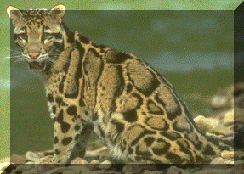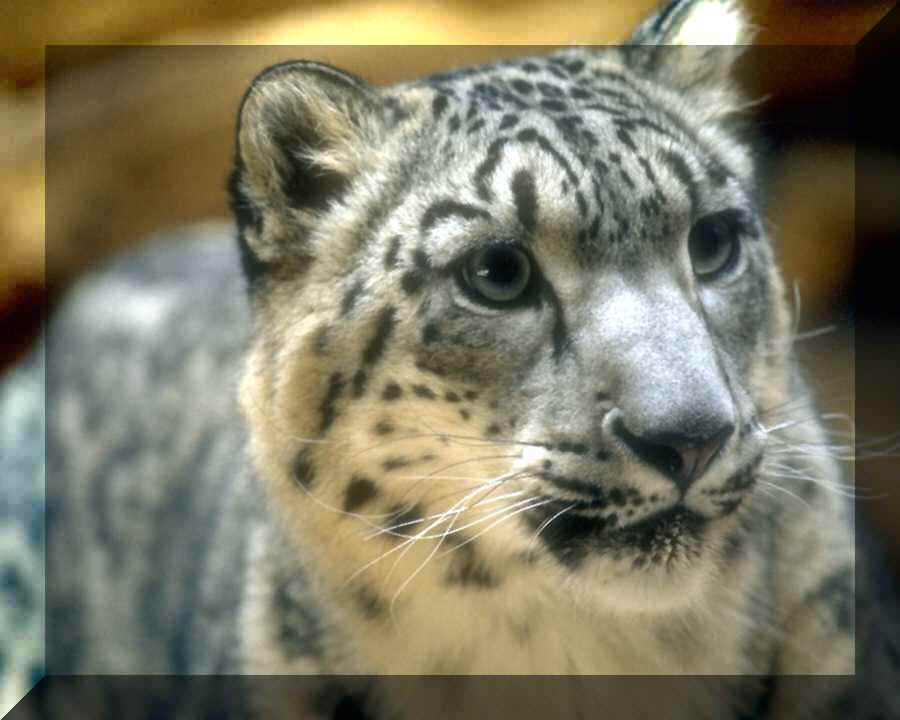


CLOUDED LEOPARD
STATUS: Endangered
DESCRIPTION: The clouded leopard has a long, narrow
body, a large tail, relatively short legs, and large broad paws. They are the most
strikingly marked of all cats. Its side pattern consists of some six large, narrow, brown
blotches, edged in black, and pale areas separating the blotches. On their backs the
clouded leopards have a series of large open-centered spots, and their undersides are pale
with few spots. They have long canines for shredding meat, and have been compared to the
extinct saber-tooth tigers in this regard. The snout is rather broad, the head quite
narrow, and the pupils yellow.
SIZE: The adult male clouded leopard is approximately 6
feet long, and weighs between 35 and 50 pounds. Females are somewhat smaller.
HABITAT: Clouded leopards prefer the deep forest away
from human settlement.
RANGE: Inhabits Nepal and Sikkim to southern China,
Hainan and Formosa and south to Sumatra, the Malay states and Borneo's mountain forests.
FOOD SOURCE: The chief prey of the clouded leopard are
monkeys, small deer, and wild boars, which it ambushes from the trees or stalks from the
ground. It may also take birds, rodents, or domestic poultry.
BEHAVIOR: Largely arboreal, clouded leopards are
excellent tree climbers; they use their long heavy tails for balance. They are nocturnal
animals, prefer seclusion, and are rarely seen. Their daylight hours are spent sleeping in
trees, while at night they hunt by stalking their prey from the trees or on the ground.
Little else is known of the social organization of these elusive creatures.
REPRODUCTION: Solitary except during breeding period.
The gestation period is 90 days; the litter consists of 2-4 cubs, which are usually born
in a hollow tree. Eyes are open after 10-12 days, and cubs are active after 5 weeks.
POPULATION: While the population of clouded leopards is
unknown, it is thought to be in decline based on the number of pelts available on the
black market, and low numbers of leopard sitings in by resident peoples of its home range.
LONGEVITY: Unknown in the wild; the clouded leopard has
lived 17 years in captivity.
SURVIVAL THREATS: Habitat destruction through logging
and advancing human population pressure, hunting for its pelt, hunting as a predator on
livestock.
LEGAL PROTECTION: CITES, Appendix I, Endangered Species
Act.
CONSERVATION: Attempts to start captive breeding
programs in zoos have been hampered by lack of sufficient breeding protocols and
inadequate information.
